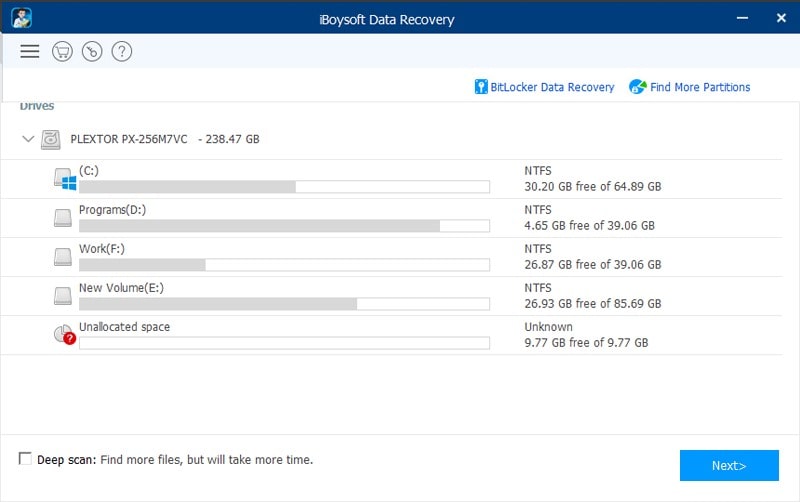USB Drive is Not Accessible on Windows 10, How to Fix?

You connect your USB drive to your Windows computer as usual. However, an error message pops up, saying that the USB drive is not accessible. What happens and how can you access the files stored on the USB drive now? Take it easy. Your data may be still there. This article will guide you to fix your USB drive not working on Windows 10 and help you access the files stored on your USB drive again.
Why your USB drive is access denied on Windows?
In order to solve the problem more accurately and avoid it to happen in the future, here we find out the main reasons for the USB drive detected but inaccessible issue.
- The file system of the USB drive is not compatible with Windows.
- Your incorrect operation on the USB drive last time.
- The disk driver of the USB drive is outdated.
- The USB drive is not partitioned.
- The USB drive is corrupted.
- Temporary bug of your Windows OS.
How to fix USB drive not accessible error on Windows?
Referring to the mentioned causes above, there are corresponding fixes for resolving the USB drive not working on Windows 10. You can troubleshoot this problem step by step
Basic checks
Before trying technical solutions, you can unplug your USB drive and insert it into your computer again to check if it can be accessed this time. Sometimes, everything goes well after a reinserting.
If not, you can connect the USB to a Mac machine to check if the Mac OS can read and write to it. If it can, the format of the drive is not Windows-compatible. By default, Windows only supports NTFS, exFAT, and FAT file systems.
If the USB drive still doesn’t work on a Mac device, you should try the following solutions.
Recover data from your inaccessible USB drive
As the basic checks are not working for the inaccessible USB drive, it may be corrupted. In this case, you’d better rescue data from the drive first.
But only data recovery software can give you a hand to recover data from an inaccessible or corrupted drive. iBoysoft Data Recovery is here to help you.
This reliable and professional data recovery tool supports recovering lost files from unreadable, corrupted, mistakenly formatted, inaccessible USB drives, external hard drives, SD cards, etc. Moreover, it also allows restoring data from RAW drives and partitions.
Here’s how to recover data from the inaccessible USB drive with iBoysoft Data Recovery:
- Free download, install and launch iBoysoft Data Recovery for Windows on your computer.
- Select the USB drive that is not accessible and click Next to scan all the files on the drive.

- Preview the searched files.
- Select your desired data and click Recover.
After recovering data from the USB drive, you can feel relax to repair it with the following solutions.
Run CHKDSK
As the USB drive probably becomes a RAW drive or is corrupted, you can try to use CHKDSK to fix it. CHKDSK is a Windows built-in feature. It helps you check the file system of the target disk and repair some of the logical file system errors it found.
Here’s how to run CHKDSK in Command to check your inaccessible USB drive:
- Enter cmd in the Search box.
- Right-click the Command Prompt and select Run as administrator.
- Type the following command and press Enter. You should replace the letter g with the USB drive letter.
chkdsk H: /f /r
Note: Run chkdsk /f /r can fix some errors detected on the disk. It also supports verifying and locating the bad sectors on the target hard disk. Then, recovering the readable information from the bad sectors.
After CHKDSK finishes running, exit Command Prompt. Then, replug your USB drive to check if it is accessible now.
Recover data and format the USB drive
If even CHKDSK fails to fix the USB drive, it probably has serious problems. You can get back your files from the inaccessible USB drive with iBoysoft Data Recovery, and then, get down to reformat the USB drive to make it workable.
To format the inaccessible USB drive:
- Open File Explorer > This PC.
- Right-click the USB flash drive and select Format.
- Set the required information, including file system, allocation unit size, volume label, format options (check Quick Format).
- Click Start and wait until the formatting process is finished.
Then, the USB drive will be accessible again on your Windows.
If the USB drive is not showing up in File Explorer and Disk Management, it indicates that the drive has physical damages. You can send it to a local repair center.
Final thoughts
The USB drive not accessible on Windows issue is very common. When you encounter this problem, check if it shows up in your Disk Management. If it shows up there, recover data from it first with iBoysoft Data Recovery software as some of the fixes may cause permanent data loss. Then, try the solutions in the post to fix the USB drive.
If the drive is even not showing up in Disk Management, it may have physical problems. You can ask a local repair center for help.
